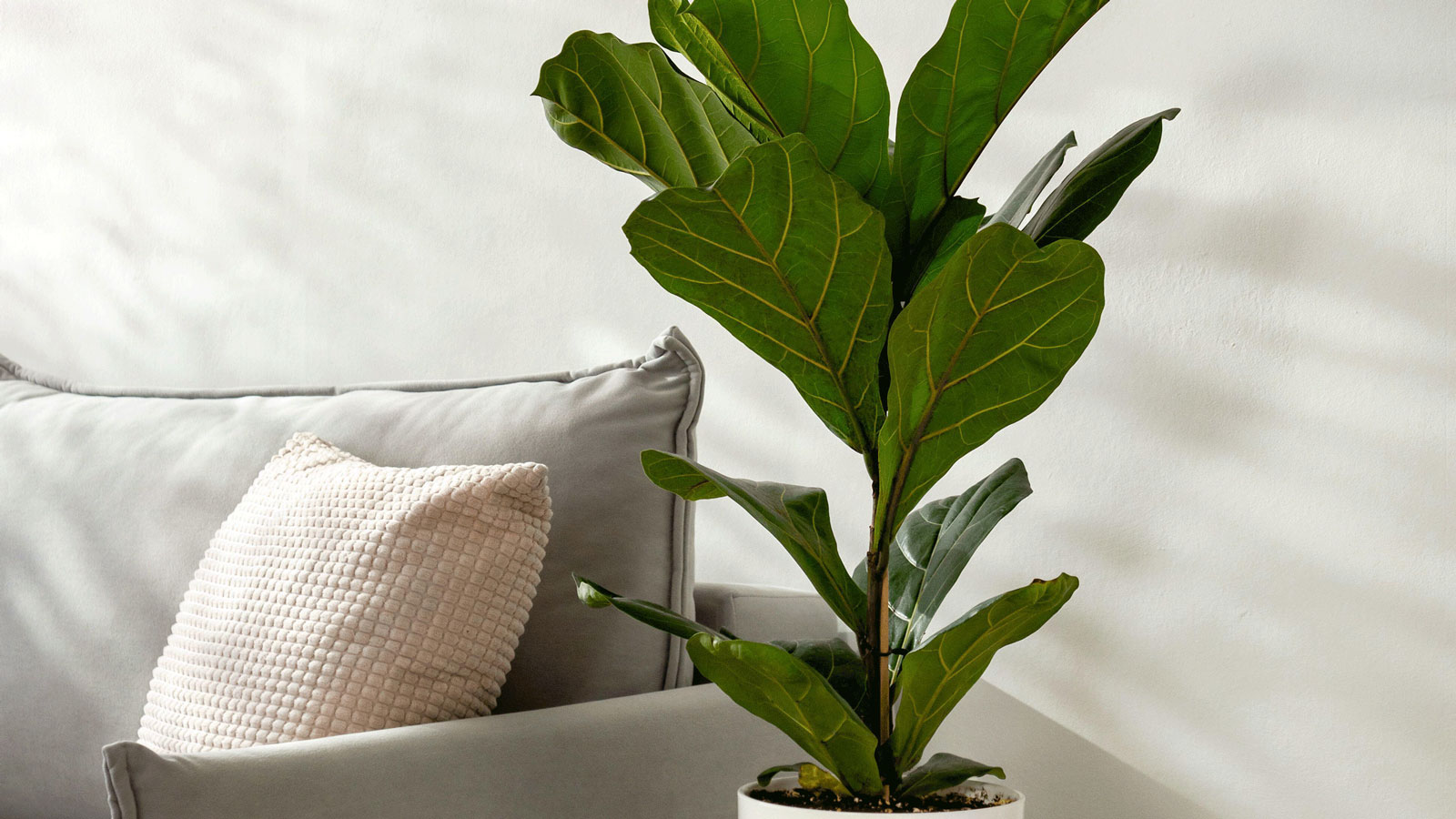
There are quite a few fiddle leaf fig problems that can potentially affect your plant and cause it to start looking less than its best. The good news is all of them are easy to deal with and you can soon get your plant back on track.
Fiddle leaf figs have such gorgeous leaves but unfortunately most problems tend to show up here first with unattractive markings or, worst case, the leaves simply fall off. If you're sure you know how to grow and care for a fiddle leaf fig but your plant is still starting to look less than lush and leafy help is here.
We're rounded up expert ways to deal with the most common fiddle leaf fig problems that lead to an underperforming plant so you can return yours to its former glory.
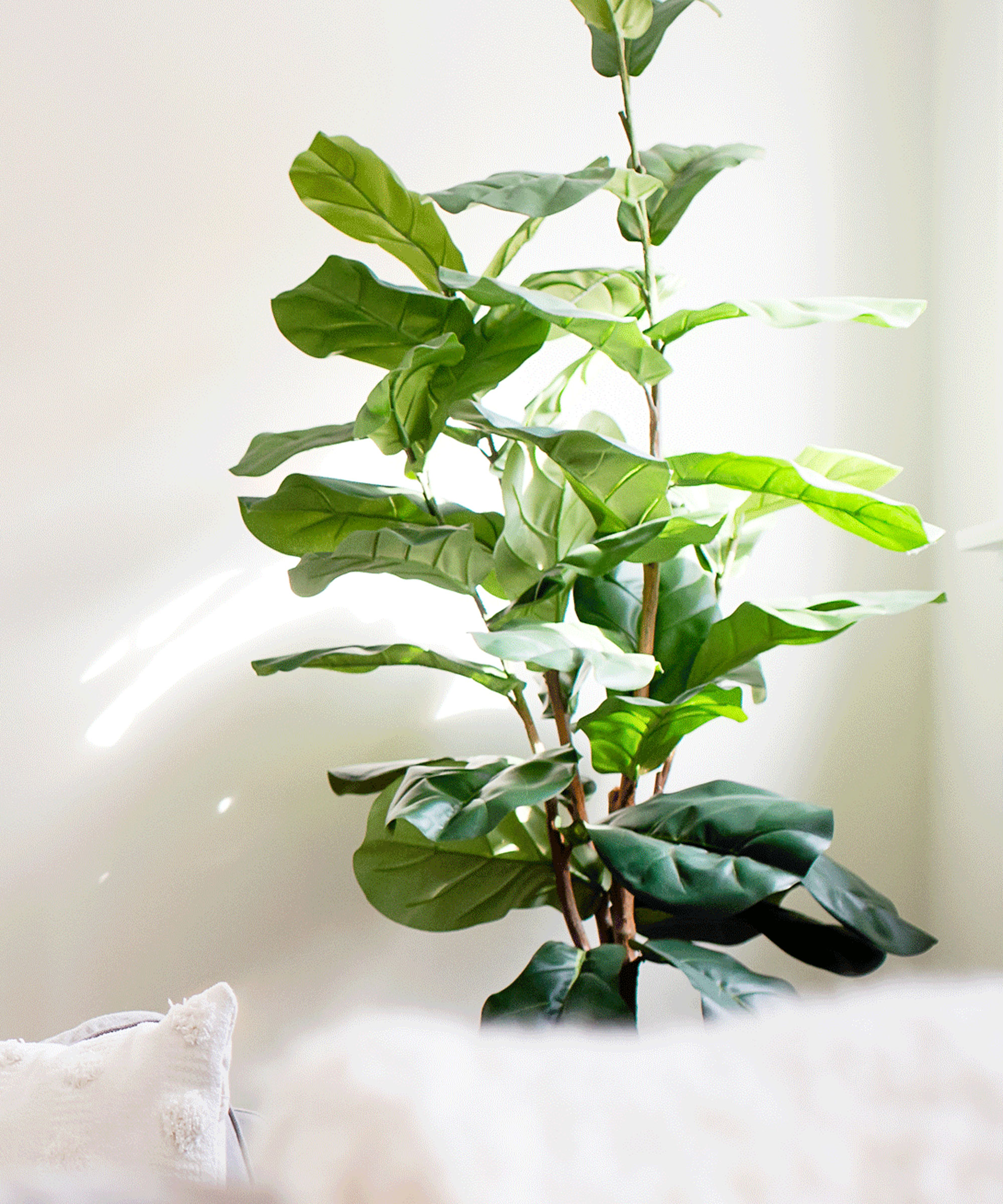
8 common fiddle leaf fig problems
We all know fiddle leaf figs are one of the best indoor plants so it's important to deal with these fiddle leaf fig problems before they take a hold.
1. Leaf drop
One thing that's always a big cause of concern for me is when my fiddle leaf figs start dropping leaves. This is despite the fact that I know it's usually nothing to worry about as it simply means my plant is getting rid of older leaves it's done with.
'Fiddle leaf figs dropping leaves is extremely common,' says Caroline Cocker of Planethouseplant.com. 'The easiest way to remedy this is to increase the amount of light your plant's getting by moving it closer to a window.'
Leaf drop is typically caused by low light but fiddle leaf fig root rot can also be responsible, and increasing the amount of light your plant is exposed to can help both. Sudden changes in temperature and humidity can also stress your plant and lead to leaf drop, so keep your plant in a steady environment wherever possible.
2. Yellowing leaves
Individual yellow leaves are one of the most common fiddle leaf fig problems. If they're at the bottom of a plant it's because they are old and discoloring naturally. But if a few of your leaves are yellowing, it can be a sign of root rot. This can result if your plant isn't draining freely. Alternatively the way you're watering your plant could be the issue so check you know how to water a fiddle leaf fig plant correctly.
'Many yellowing leaves that fall off the plant can be a sign of overwatering or root rot,' says Mo Bhula of Thebotanicalarchive.com. 'This can happen if the plant is in a container that is too large and holding onto too much moisture, or if it is receiving too much water too frequently.'
To fix this issue, take your plant out of its pot and remove any black and slimy roots, then find out how to repot your fiddle leaf fig into fresh well-draining potting mix.
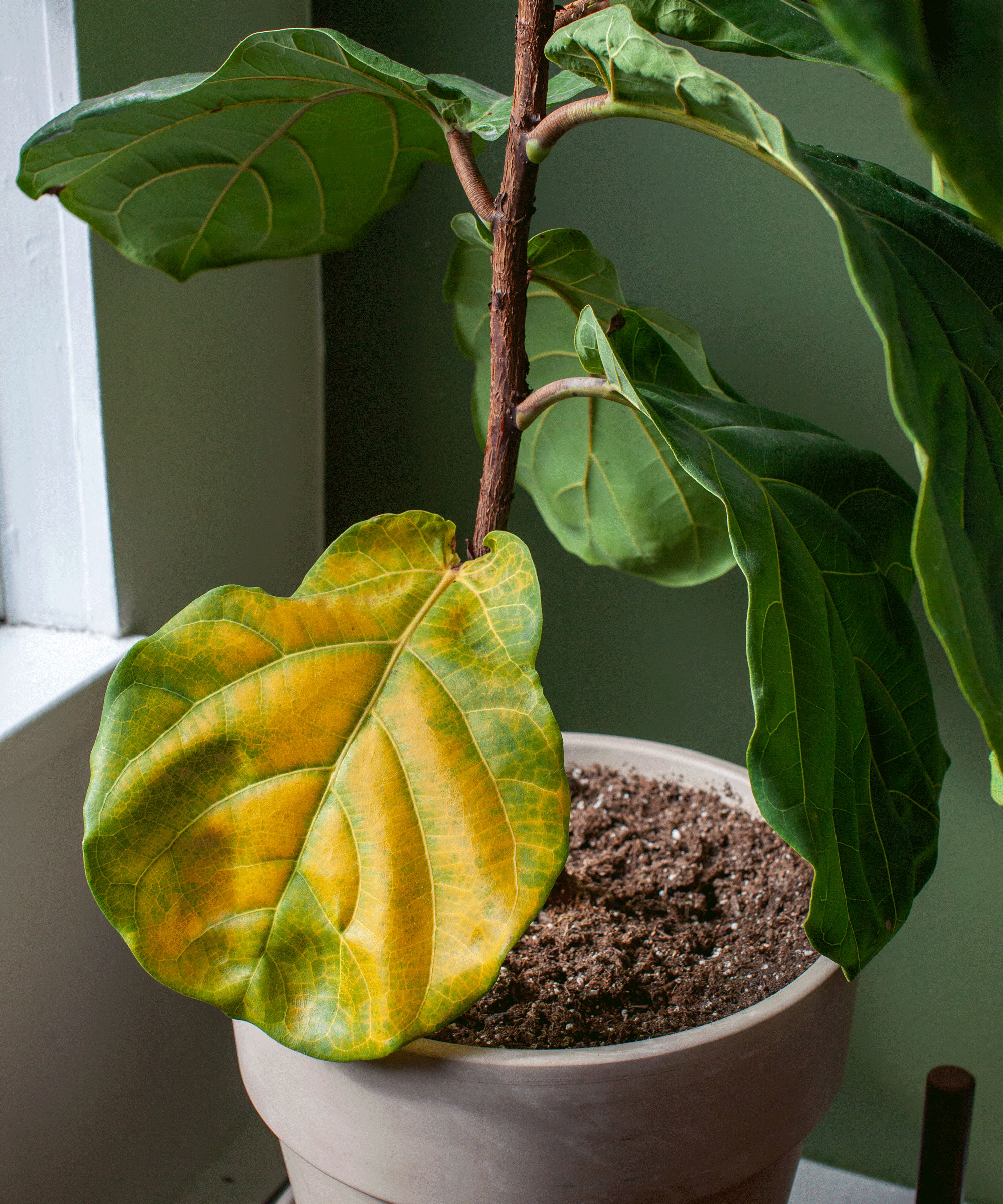
3. Brown and crispy leaves
If your fiddle leaf fig plants are turning brown and crispy don't worry as it's another one of the more common fiddle leaf fig problems that is more than likely due to poor watering technique.
'Brown leaves on a fiddle leaf fig are often a sign of underwatering,' explains Mo Bhula. 'This can happen if the plant is in a container that does not drain well and is holding onto excess moisture causing rot on the lower roots but dryness elsewhere.'
To remedy this, make sure your fiddle leaf fig is getting enough water and that its container has adequate drainage. Mo recommends drenching your plant when the top inch of soil is dry and repeating this regularly to zap the problem.
4. Drooping leaves
This is one of the more straightforward fiddle leaf fig problems to deal with. Droopy leaves are often a sign that your plant is wilting because it needs watering, so first check to see if the soil is dry. 'I keep a close eye on my fiddles, and as soon as the leaves show any signs of sagging, I give them some water,' says René Lategan founder of Livebylists.com.
'If your fiddle leaf fig is wilting, it’s not getting enough water,' says Henna Bell of Thegardeninghood.com. 'Water the plant deeply, until water runs out of the bottom of the pot. Allow the top few inches of soil to dry out before watering again.'
If the soil is wet, check the roots, as droopy leaves can also be a sign of root rot. 'To rescue your plant, you will want to check whether the roots are discolored and mushy,' says gardening expert Melvin Cubian of Plantin.
If so, replant it with fresh well-draining potting compost in a pot with holes. If the roots are healthy, a deep and generous watering of the soil can make your leaves perk up again. Another cause of droopy leaves is excessive heat, so move your plant into the shade on very hot days.
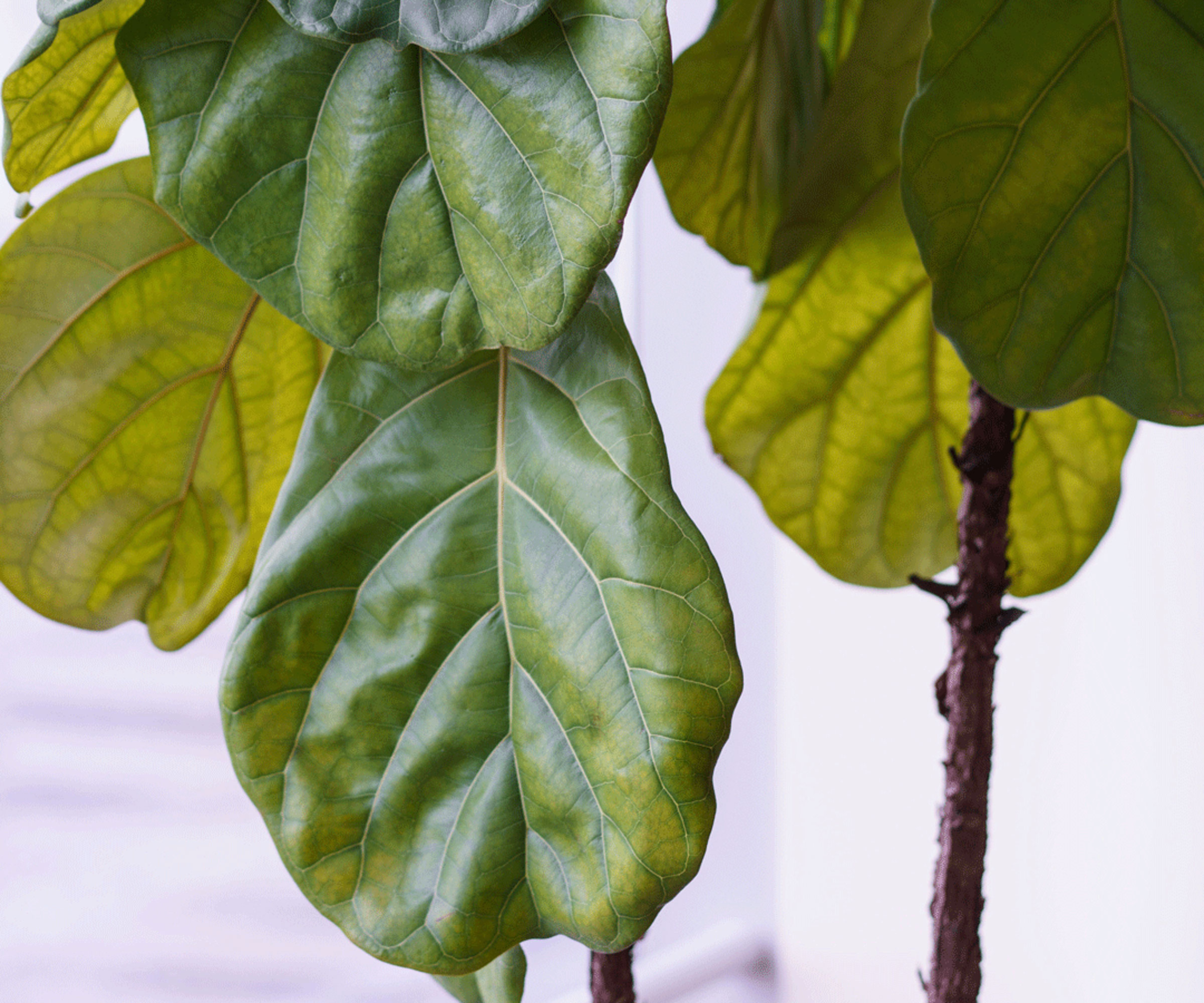
5. Insect infestation
Fiddle leaf fig pest infestations are more common during the summer months and can be troublesome if you let them go unchecked as they multiply quickly and spread to other plants.
'Fiddle leaf figs can be susceptible to common houseplant pests and infestations, such as spider mites, mealybugs, and scale insects,' says Sholom Rosenbloom, owner of Rosenbloom Pest Control in Baltimore, MD. 'To solve this problem, treat the plant with an insecticide or insecticidal soap, or wipe the leaves with a damp cloth to remove the pests.'
Check the leaves regularly for pests, especially during the warmer months of the year. Wipe them over with a dry microfiber cloth if you find just one or two that need dealing with. Avoid overwatering as a swampy layer of topsoil will act as a beacon for every neighborhood indoor plant pest going.
6. Poor growth
If your fiddle leaf fig is not growing, there are a number of things to take into account to get it to put a spurt on. Overwatering, under-watering, and lack of light or nutrients can all affect how your fiddle leaf fig grows.
'If your fiddle leaf fig is not looking its best, it may be lacking the essential nutrients it needs,' says Henna Bell. 'Feed it a balanced fertilizer every two weeks, and make sure your plant is getting the right amount of bright, indirect light, and water.' Try a liquid plant food like this indoor plant food from Amazon.
It's also a good idea to check your plant carefully for issues like pests and root rot, as well as considering repotting your plant into a bigger pot as it could be root bound in its existing one.
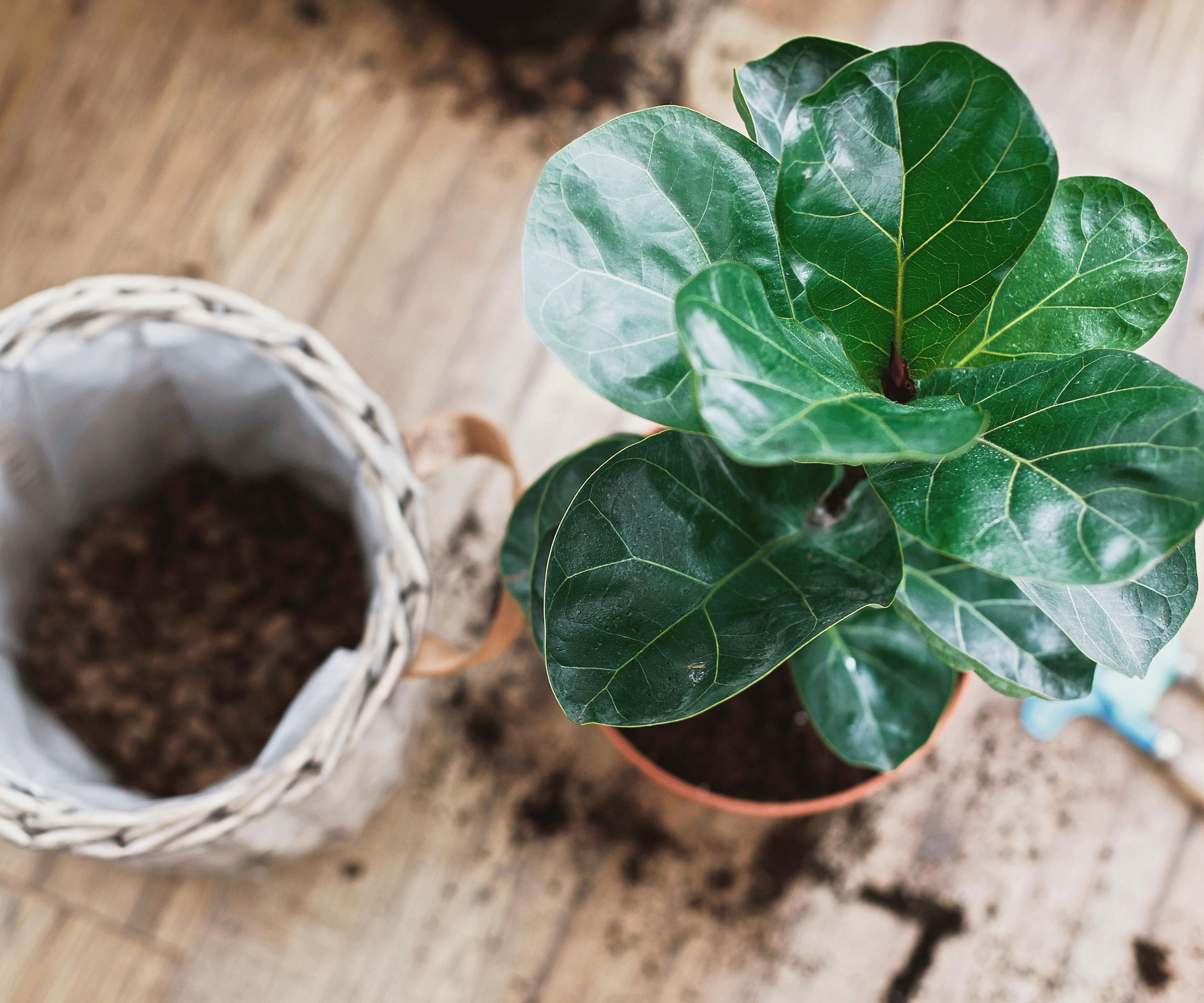
7. Red spots on leaves
It can be super annoying when those big gorgeous leaves of your fiddle develop an ugly rash of red spots. 'These could be either edema or a feeding injury from spider mites,' explains Melvin Cubian. 'Edema is a physiological condition that occurs when the tiny cells in the young leaves burst with excessive water pressure when the plant absorbs more water than it can process.'
This problem usually affects young leaves. Most plant parents treat this as more of an aesthetic problem than a real threat to their fiddle. A moderate watering routine is usually enough to deal with it.
Meanwhile, spider mites can produce tiny specks on both young and old leaves. If you think you have an infestation, put your plant in the sink or shower, and spritz the leaves to wash away any mites and eggs. Let your plant dry, then treat with a natural pesticide like neem oil, such as this Harris neem oil concentrate from Amazon that you can add to a homemade bug spray.
8. Leggy stems
'Leggy growth happens when your fiddle plant doesn't get enough light, and the space between the internodal space (the gap between each leaf) is very long,' explains Caroline Cocker. 'You'll need to increase the light to convince your fiddle leaf fig to grow in a more compact, bushy way.'
If your fiddle leaf fig isn’t receiving enough light in its current location, its leaves will start to droop and its stems will become leggy. This is one of the easiest fiddle leaf fig problems to fix. 'Simply move it to an area with more bright, indirect light,' says Henna Bell.
You may also want to consider fiddle leaf fig pruning options to get a bushier plant. If you prune a healthy plant it will divide its branch where it has been pruned, resulting in two branches. This means you will end up with a much fuller and more shapely looking plant rather than the leggy specimen you had formerly.
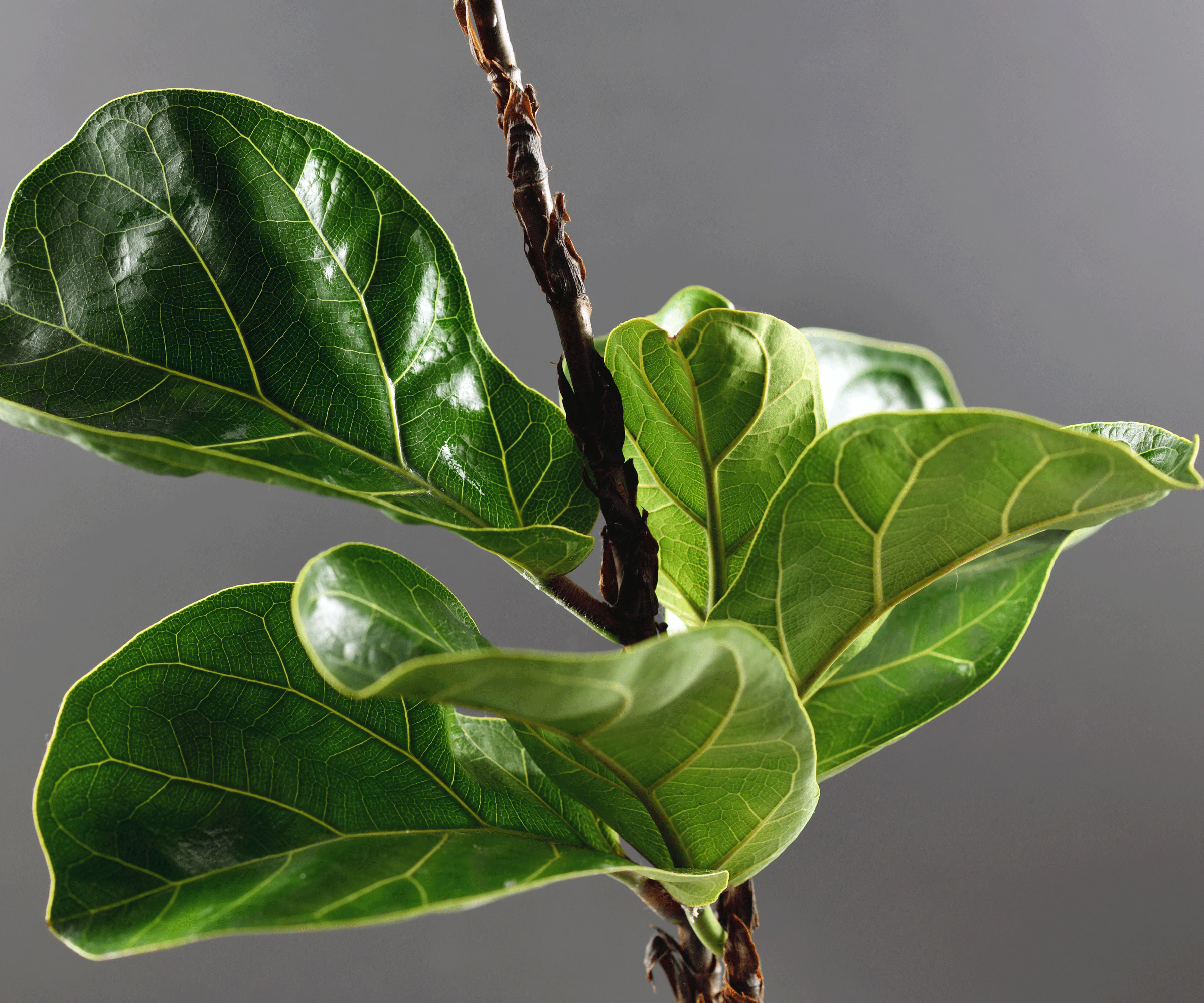
If you've nurtured your fiddle leaf fig into quite a specimen naturally you'll be disappointed if it isn't thriving and doing the best it can. After all, they are one of the best tall indoor plants around to add to your interior for a stylish aesthetic, and you won't want to lose yours.
With the right care and attention, you can fix fiddle leaf fig problems and keep your plant looking its best. Even if your plant has been having a moment, don’t give up. With our checklist, it will soon be back to looking lush and vibrant.







